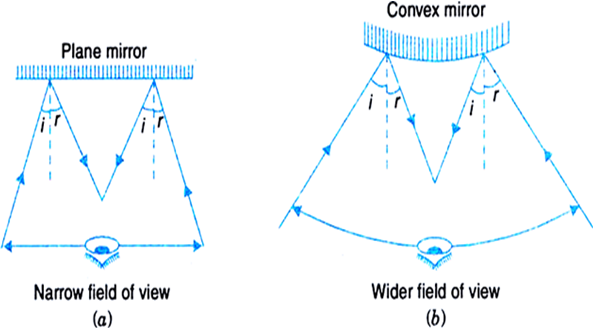
A concave lens of focal length 15 cm forms an image 10 cm from the lens. How far is the object placed from the lens? Draw the ray diagram.
Focal length, f = - 15 cm [f is - ve for a concave lens]
Image distance, v = - 10 cm [Concave lens forms virtual image on same side as the object, so v is - ve]
As, ![]()
![]()
![]()
Object distance, u = -30 cm. Ans.
Drawing the ray diagram: Using a scale of 1: 5, we get v = - 2 cm, f = - 3 cm. We draw the ray diagram as follows:
(i) Draw the principal axis (a horizontal line).
(ii) Draw a convex lens, keeping principal centre (C) on the principal axis.
(iii) Mark points F and B on the left side of lens at a distance of 3 cm and 2 cm respectively.
(iv) Join any point D (nearly at the top of lens) and F by a dotted line.
(v) Draw a line AD, parallel to principal axis.![Focal length, f = - 15 cm [f is - ve for a concave lens]Image d](/application/zrc/images/qvar/SCEN10053030-3.png)
(vi) Draw a line A'B', perpendicular to principal axis from B'.
(vii) Draw a line CA', backwards, so that it meets the line from D parallel to principal axis at A.
(viii) Draw a line AB, perpendicular (downwards) from A to meet the principal axis at B.
(ix) The AB is position of object. Measure distance BC. It will be found to be equal to 6 cm.
Thus, object is placed at a distance of 6 cm × 5 = 30 cm from the lens.
Given,
Radius of curvature, R = 20 cm
Relationship between radius and focal length is as :
Focal length =
is the focal length of the mirror.
Why do we prefer a convex mirror as a rear-view mirror in vehicles?
Uses of convex mirrors: Drivers use convex mirror as a rear-view mirror in automobiles because of the following two reasons:
1. A convex mirror always forms an erect, virtual and diminished image of an object placed anywhere in front of it.
2. A convex mirror has a wider field of view than a plane mirror of the same size, as shown in Fig.
Thus convex mirrors enable the driver to view much larger traffic behind him than would be possible with a plane mirror. The main disadvantage of a convex mirror is that it does not give the correct distance and the speed of the vehicle approaching from behind.
Fig. Field of view of (a) a plane mirror (b) a convex mirror
